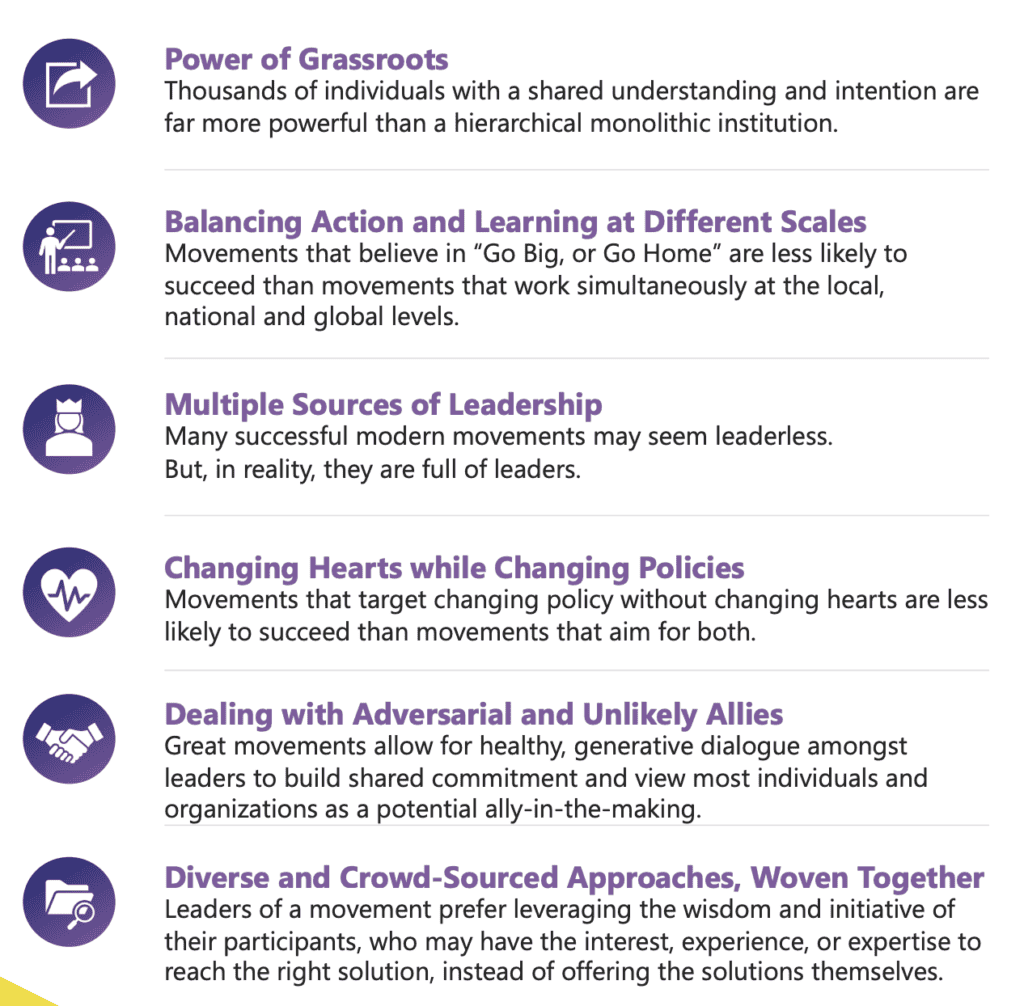This website uses cookies so that we can provide you with the best user experience possible. Cookie information is stored in your browser and performs functions such as recognising you when you return to our website and helping our team to understand which sections of the website you find most interesting and useful.
Our usual way to understand change is through programs led by organizations. Our Jesuit.Network initiative is trying to promote and amplify new collective-impact-based approaches, with more distributed and networked way to understand change. Today, we focus this post on Movements, a particular kind of collective impact perfectly exemplified in our current apostolic body by Fe y Alegría.
What follows is an excerpt from the Understanding Movements report, researched by Kapil Dawda, commissioned by Rohini Nilekani Philanthropies. You can access the full report and the accompanying Understanding Movements deck at the bottom of this post.
In the context of Social Change, a movement has:
- A diverse collective of people and organisations coming together as participants
- The shared intention to create wide-scale, transformational change focused on a social, economic, environmental, or political problem that guides the collective direction
- Distributed, shared and bottom-up action by multiple participants, including those at the grassroots

Many famous movements emerged in the face of pressing crises. Some examples are the Quit India Movement or Civil Rights Movement of the past and contemporary movements like the Arab Spring or #MeToo. However, movements are not limited to those that arise in response to a crisis that escalates through triggering incidents. Many others address latent, not urgent problems by applying the same principles. For example, Service Space is a global movement to unleash the innate spirit of generosity in people. YouthXYouth is another example of a worldwide movement focused on bringing back the agency of young people in their learning experience!
Movements are more than collective, confrontational action against oppressors in power. This view over-simplifies the complexity and leads us to think in terms of just bilateral dynamics. Many lasting movements take a more systemic view. To view movements more holistically, we must observe the relationships between the leaders, the participants, the organisations and the stakeholder groups involved. It is also worth examining who the leaders are, what they do, how they lead and most importantly, why they do it. It enables us to appreciate how movements work with a diverse collective to bring social, environmental or political change.
In their book New Power, Jeremy Heimans and Henry Timms define New Power as “a current. It is made by many. It is open, participatory, and peer-driven. It uploads, and it distributes. Like water or electricity, it is most forceful when it surges. The goal of ‘new power’ is not to hoard but to channel.” By this definition, movements are a form of new power focused on bringing societal change.

Access the Understanding Movements Report and Presentation Deck HERE at NetworkWeaver and HERE at Rohini Nilekani Philanthropies
This resource explores:
- What are movements?
- What is their relevance in social change?
- What are some of their defining features?
- How do they differ from programs or collective impact?
Originally published at Rohini Nilekani Philanthropies





